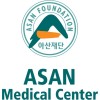
Early Diagnosis of Invasive Lung Aspergillosis
Respiratory InfectionInvasive Pulmonary AspergillosisThe last decade has seen a significant increase in secondary Aspergillus infections, not only due to primary hypersensitivity, and immunodeficiency based on oncological diseases and their therapy, but mainly due to a rise in severe respiratory infections (H1N1, COVID-19, bacterial infections). This is most evident in critically ill patients whose life is threatened by invasive pulmonary aspergillosis (IPA), with over 90 % of cases being caused by Aspergillus fumigatus. In recent decades, various biomarkers with well-known limits of use (Aspergillus DNA, galactomannan, 1,3-ß-D-glucan) have been used for early diagnosis of IPA. However, the clinical need to clearly distinguish the onset of IPA from colonization is much more significant. The current biomarkers only provide "probable IPA" interpretation, and the diagnosis is rarely confirmed. Based on our preliminary studies, the use of new low molecular weight substances (secondary metabolites) combined with acute-phase proteins (pentraxin 3) allows very reliable immediate confirmation of IPA. In tissue samples, bronchoalveolar lavage fluid, endotracheal aspirate, breath condensate, serum, and urine of critically ill patients, the investigators will be able to recognize and confirm IPA in time using highly sensitive mass spectrometry detecting specific microbial siderophores in correlation with a significantly increased concentration of acute-phase host protein (pentraxin 3) within hours of the beginning of the invasion of lung tissue. Through a prospective multicentre study, the investigators will evaluate the benefit of new biomarkers in non-invasive IPA confirmation, improve the IPA diagnostic algorithm and transfer the detection method to MALDI-TOF spectrometers widely used in Clinical laboratories in the Czech Republic. In MALDI-TOF mass spectrometry, the ion source is matrix-assisted laser desorption/ionization (MALDI), and the mass analyser is a time-of-flight (TOF) analyser. The study results will contribute to a high clarity of IPA cases, the accurate introduction of antifungal therapy, and a better prognosis of survival of critically ill patients.

Longitudinal At Home Smell Testing to Detect Infection by SARS-CoV-2
AnosmiaAsymptomatic COVID-193 moreThe purpose of this study is to learn more about how to better track smell recovery in people who have been infected with the SARS-CoV-2 virus (which causes COVID-19). Many people who have been infected by this virus develop changes in their sense of smell (olfaction). We are interested in measuring smell function objectively via smell cards that test odor intensity, identification, and discrimination. Objective and precise olfactory testing that can be performed in the convenience of one's home will help identify people with smell loss after infection by SARS-CoV-2. We will use results from this test to better understand the relationship between SARS-CoV-2 infection and recovery of olfactory function and to learn whether the AROMHA longitudinal smell test is a reliable olfactory function tracking tool to quantify smell loss in the context of COVID infection. These results may inform the design of therapeutic clinical trials to accelerate the recovery of smell function.

Lung Structure-Function In SurVivors of Mild and SEvere COVID-19 Infection: 129Xe MRI
COVID-19 Respiratory InfectionIn this study the Investigators aim to deploy UTE and HP 129Xe MRI for structural and functional evaluation of persistent lung abnormalities in COVID-19 survivors.

Distinguishing Bacterial and Viral Infections by MeMed BV® Test to Limit Gut Colonization by MDRO...
Viral InfectionBacterial Infections2 moreThe fast increase of Multidrug-resistant microorganisms (MDRO) due to the high amount of antimicrobials being poorly used may be limited by better regulating antimicrobial usage globally. The goal of this observational study is the performance of the MeMed BV® test in the MeMed Key® device at the emergency department to a) support the differential diagnosis between bacterial and viral infections of the respiratory tract and b) provide evidence of how the use of this test may limit gut colonization by MDRO.

Respiratory Virus Metagenomics After COVID-19
COVID-19 Respiratory InfectionThe study aims to characterize the distributive pattern of viruses in upper airway and its relationship with influenza seasons, symptomatology and exposure setting. A total of 500 adults residing in Hong Kong would be recruited, who would complete a questionnaire and return self-collected nasal and throat swabs for metagenomic analyses.

Short Period Incidence Study of Severe Acute Respiratory Illness
Severe Acute Respiratory InfectionThis is a multi-centre, prospective, short period incidence observational study of patients in participating hospitals and intensive care units (ICUs) with SARI. The study period will occur, in both Northern and Southern hemispheric winters. The study period will comprise a 5 to 7-day cohort study in which patients meeting a SARI case-definition, who are newly admitted to the hospitals / ICUs at participating sites, will be included in the study. The study will be conducted in 20 to 40-hospital/ ICU-based research networks globally. All clinical information and sample data will only be recorded if taken as part of the routine clinical practice at each site and only fully anonymised and de-identified data will be submitted centrally. The primary aim of this study is to establishing a research response capability for a future epidemic / pandemic through a global SARI observational study. The secondary aim of this study is to investigate the descriptive epidemiology and microbiology profiles of patients with SARI. The tertiary aim of this study is to assess the Ethics, Administrative, Regulatory and Logistic (EARL) barriers to conducting pandemic research on a global level.

Detection and Characterization of Lower Respiratory Infections in Critically Ill Patients
Severe PneumoniaThis study is a prospective observation study for lower respiratory tract infections in medical intensive care unit. Microbiologic and clinical characteristics and outcomes of patients with severe pneumonia in medical intensive care unit will be monitored and analyzed.

Estimating Risk of Respiratory Infections Attributable to CFTR Heterozygosity
Carrier StateRespiratory InfectionsA research team member will brush the inferior surface of the subjects' middle turbinate (nasal cavity) using a cytology brush to obtain the cells needed to perform our functional respiratory assays. An individual trained in phlebotomy will draw one 3 ml lavender top tube of blood to test c-reactive protein, calprotectin, and lactoferrin. They will also draw a 5 ml gold top serum separator tube of blood to test fibroblast growth factor-19. The participant will answer questions from the baseline survey and report their current medications interview-style with the research team member.

Evaluation of the Labcorp COVID-19+Flu+RSV Test Home Collection Kit
COVID-19 Respiratory InfectionInfluenza A2 moreTo compare the results obtained by analysis of a self-collected anterior nasal (AN) swab as part of the Labcorp COVID-19+Flu+RSV Test Home Collection Kit to a healthcare provider (HCP)-collected AN swab in patients with symptoms of viral respiratory infection consistent with influenza A (Flu A), influenza B (Flu B), respiratory syncytial virus (RSV) and/or SARS-CoV-2 (C-19).

RASCALS: Rapid Assay for Sick Children With Acute Lung Infection Study
Lower Respiratory Tract InfectionVentilator Associated Pneumonia1 moreLower Respiratory Tract infections are a common cause of admission to the intensive care unit. Children routinely receive antibiotics until the tests confirm whether the infection is bacterial or viral. The exclusion of bacterial infection may take 48 hours or longer for culture tests on biological samples to be completed. In many cases, the results may be inconclusive or negative if the patient has already received antibiotics prior to the sample being taken. A rapid assay to detect the most likely cause of infection could improve the speed with which antibiotic therapy is rationalised or curtailed. This study aims to assess whether a new genetic testing kit which can identify the presence of bacteria and viruses within hours rather than days is a feasible tool in improving antibiotic prescribing and rationalisation of therapy in critically ill children with suspected lower respiratory tract infection.
